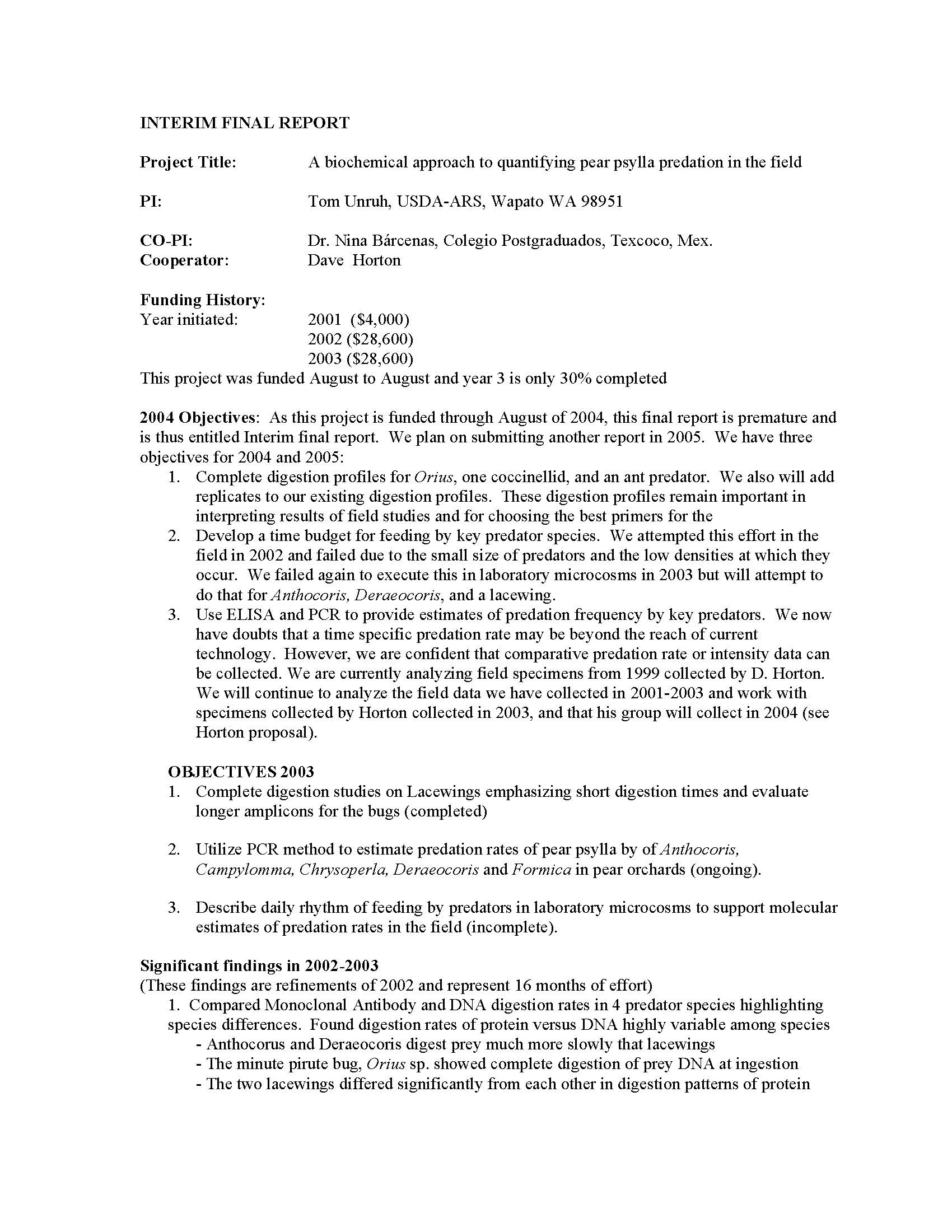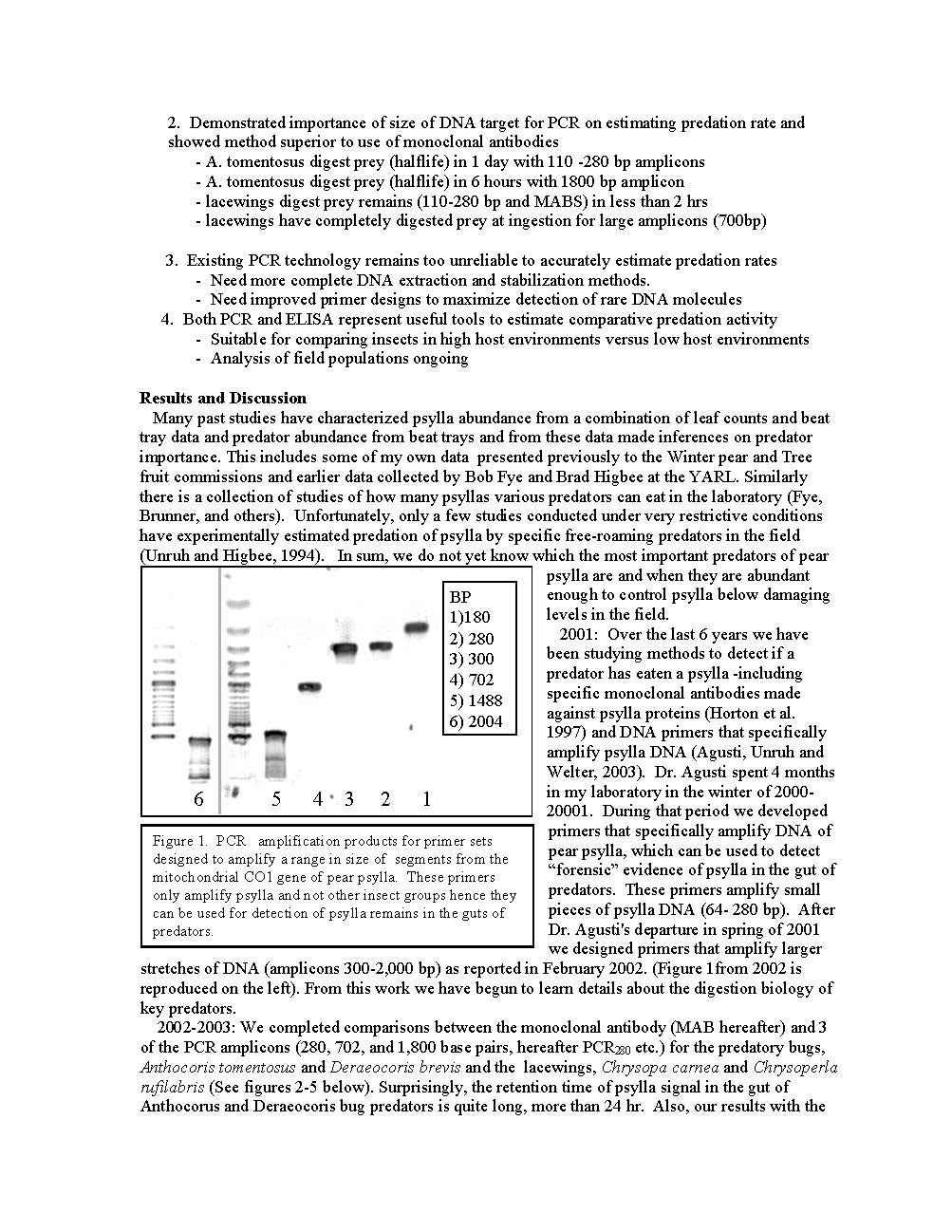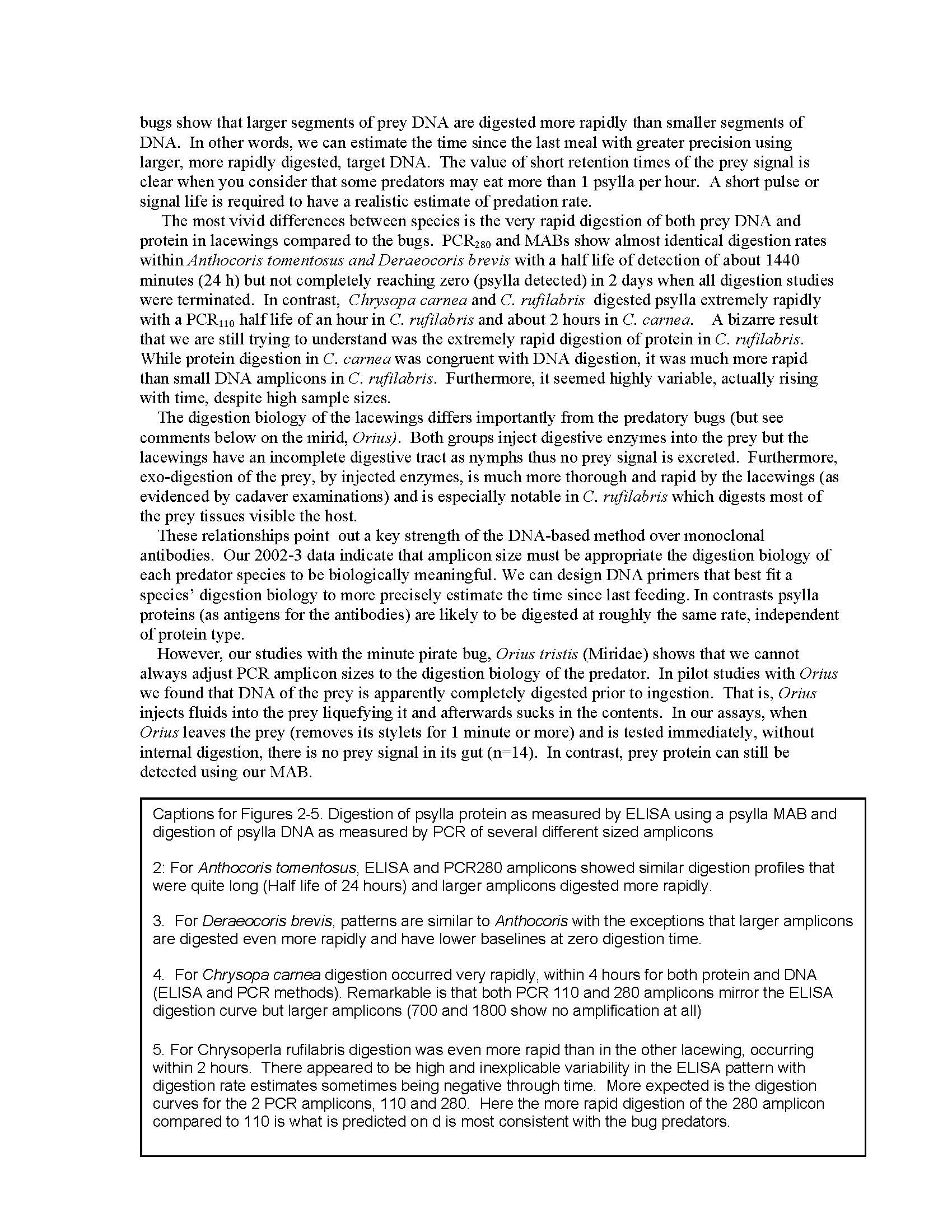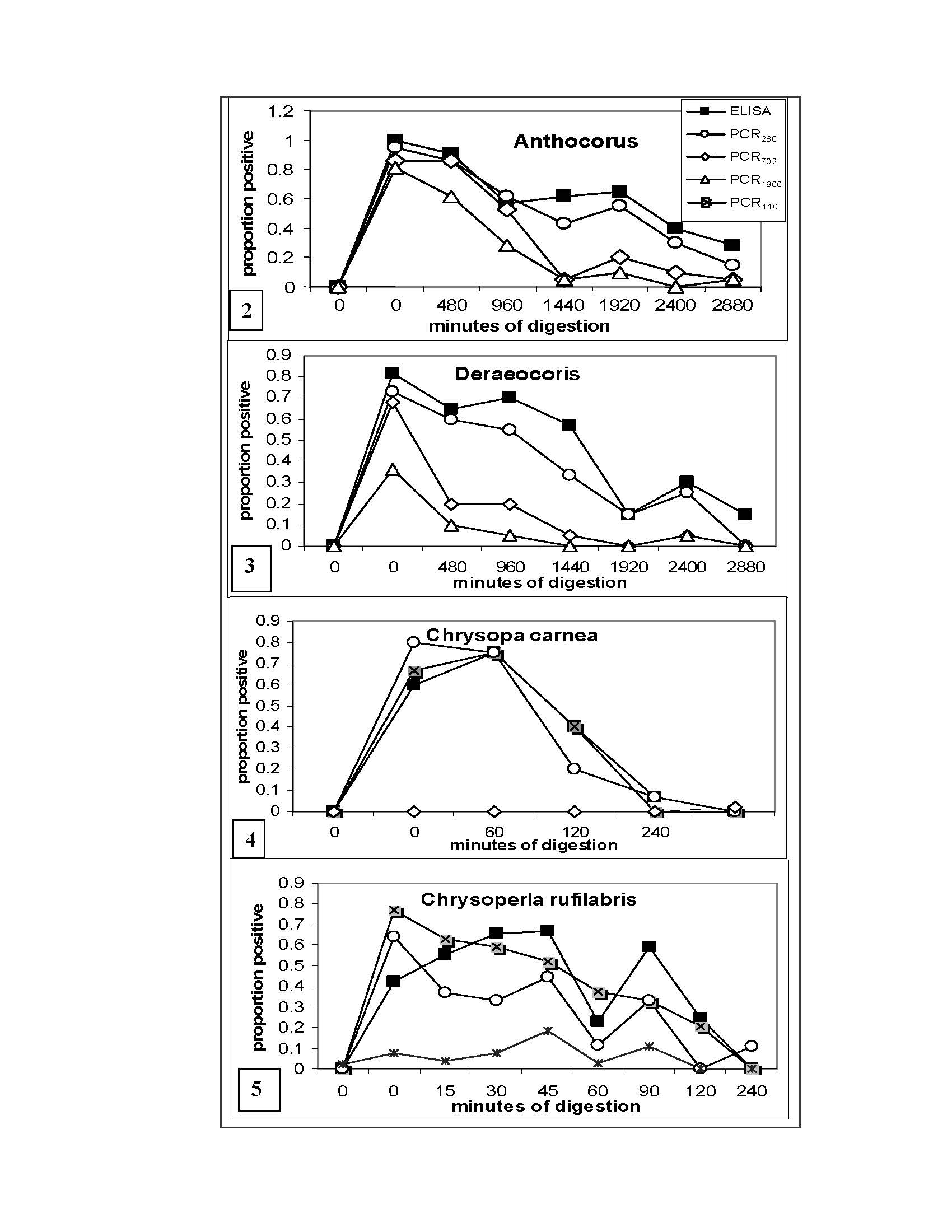A biochemical approach to quantifying pear psylla predation in the field
Author: Tom Unruh, Dr. Nina Bárcenas
Published: 2003
Summary: 2004 objectives: 1. Complete digestion profiles for Orius, one coccinellid, and an ant predator. We also will add replicates to our existing digestion profiles. These digestion profiles remain important in interpreting results of field studies and for choosing the best primers for the 2. Develop a time budget for feeding by key predator species. We attempted this effort in the field in 2002 and failed due to the small size of predators and the low densities at which they occur. We failed again to execute this in laboratory microcosms in 2003 but will attempt to do that for Anthocoris, Deraeocoris, and a lacewing. 3. Use ELISA and PCR to provide estimates of predation frequency by key predators. We now have doubts that a time specific predation rate may be beyond the reach of current technology. However, we are confident that comparative predation rate or intensity data can be collected. We are currently analyzing field specimens from 1999 collected by D. Horton. We will continue to analyze the field data we have collected in 2001-2003 and work with specimens collected by Horton collected in 2003, and that his group will collect in 2004 (see Horton proposal). 2003 objectives: 1. Complete digestion studies on Lacewings emphasizing short digestion times and evaluate longer amplicons for the bugs (completed) 2. Utilize PCR method to estimate predation rates of pear psylla by of Anthocoris, Campylomma, Chrysoperla, Deraeocoris and Formica in pear orchards (ongoing). 3. Describe daily rhythm of feeding by predators in laboratory microcosms to support molecular estimates of predation rates in the field (incomplete).
Keywords:




